ABSTRACT:
Twenty two cases of meningiomas in dogs, diagnosed in about 18 years, were analyzed. The neoplasms were histologicaly classified and graded according to the World and Health Organization (WHO of 2007) for human meningiomas, adapted for dogs, in Grade I (G-I; benign), Grade II (G-II; atypical), and Grade III (G-III; anaplastic or malignant). Additional data about gender, age, breed, skull conformation, clinical course and signs, anatomic localization, gross and histological findings were obtained from the necropsy reports. Intracranial and supratentorial meningiomas were the most frequent in relation to the other intracranial or intraspinal sites. The intracranial ones were characterized mainly by clinical signs of thalamic-cortical alteration. Intraspinal ones were mainly characterized by ataxia. G-I meningiomas were the most frequent (63.6%) in dogs, followed by G-III (22.7%) and G-II (13.6%). GI were characterized by having the psammomatous subtype as the most frequent, more than one morphological pattern in the same tumor, one third presenting areas of invasion of nervous tissue, 71.4% of cases involving females, a mean age of 11 years, pure breed dogs as the most affected ones and for having the longest survival time after the manifestation of clinical signs. G-II meningiomas were characterized by having the chordoid subtype as the most frequent, invasion of nervous tissue in one third of cases, only females affected, a mean age of 12 years, two-thirds of the dogs affected were mongrels and the maximum survival time of 20 days. The G-III meningiomas were characterized by having the papillary subtype as the most frequent, invasion of the nervous tissue in 80% of the cases, 60% of the cases involving females, a mean age of 8 years, 80% of dogs affected were Boxers and the maximum survival time of 90 days. In conclusion, this study allowed to establish a relationship between the three histological grades observed in 22 cases of meningiomas in dogs with various clinical-epidemiological and pathological parameters, providing useful information for a better understanding of the correlation between the histological grading and the clinical evolution of these neoplasms.
INDEX TERMS:
Meningioma; brain neoplasms; histological gradind; dogs; pathology

 Thumbnail
Thumbnail
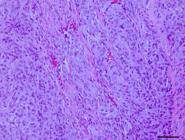 Thumbnail
Thumbnail
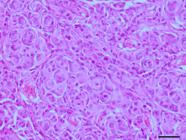 Thumbnail
Thumbnail
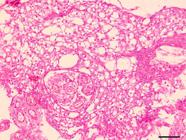 Thumbnail
Thumbnail
 Thumbnail
Thumbnail
 Thumbnail
Thumbnail
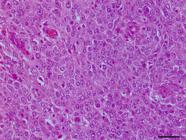 Thumbnail
Thumbnail
 Thumbnail
Thumbnail
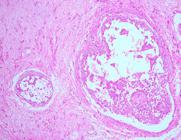 Thumbnail
Thumbnail
 Thumbnail
Thumbnail









